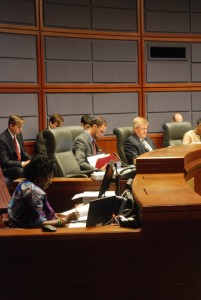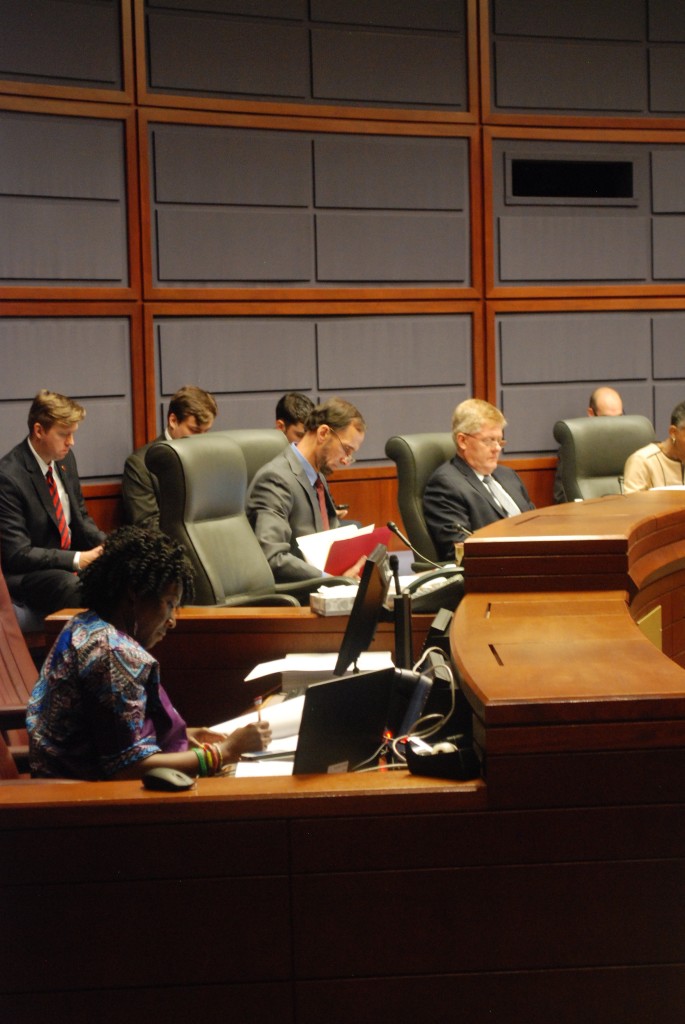
On April 19, Superintendent Dr. Karen Garza and other officials in Fairfax County met up at the Fairfax County Government Center to observe the Board of Supervisors’ discussion about the 2017 county budget markup and recommendations for the 2018 budget. District representatives on the Board of Supervisors debated over topics such as teacher salaries and class sizes, with the goal to better align FCPS with nearby school systems.
At the beginning of the school year, FCPS requested $122.7 million in additional funding from the county, which is an increase of six and seven tenths percent from the previous year. However, the amount presented in the county supervisor’s budget in February called for a three percent increase.
Fairfax County Public Schools has received budget cuts over the last nine years, but the cuts for the upcoming year cause a loss of $50 million compared to last year. According to the FCPS website, the Board of Supervisors has had to cut 2,172 positions and almost half a billion dollars since 2007. This is due to an increase in the student population, funds for employee retirement, health insurance costs and teacher compensation.
Teacher compensation was a major topic of discussion among the Board of Supervisors, as FCPS teachers haven’t had a significant raise in pay in seven years. Lee district representative Jeff McKay, who was the representative that put together the budget, advocated for its passing because with proposed tax increases teachers would be able to get a raise.
“[This is] yet another example of underpaid employees that serve our constituents and where the state comes up short,” McKay said.
The Board of Supervisors voted at the end of the meeting on a possible increase in teacher salaries and decrease in class sizes. The proposed financial plans passed without the need to cut student programs.
Less than half of the money raised by taxes in Northern Virginia stays in Northern Virginia because more of Virginia’s overall state budget that is set aside for education funds ends up in Southern Virginia schools.
State funding was recently subject to recalculations, which, according to Providence district school board representative Dalia Palchik, is a large contributor to the budget issues.
“The additional surplus that the state received this year allowed for some additional money to go towards education,” Palchik said. “However, with the total additional funds minus the loss of funds due to a change in the funding formula and enrollment changes, the net increase in state funding is approximately $16.8 million, which is less than one percent of our total budget.”
This means that due to changes in funding distribution, FCPS actually loses money, despite an increase in the education budget.
FCPS is the 10th largest school system in the country, which means smaller budgets can not cover all needs-based programs, so things like small class sizes, waitlists, textbooks, computers, buses, maintenance and salaries, among other smaller things have to be cut from the current budgetary plan. Programs that allow for elective variety, advanced courses and career-focused classes were also on the table to be cut.
Programs that grew in the last few years such as ESOL and Special Education also add costs that would need to be included in the budget.
FCPS ends each school year with around one and a half percent of the budget unspent, which happens in order to meet minimum school revenue standards required by law and carries over into next school year’s budget. This additional money serves as more of a buffer zone in case FCPS goes over budget, as opposed to a bonus for the school in the following year.
Seventy percent of FCPS funding comes from inter-county transfer and 23 percent from state aid, with the last seven percent divided among various taxes and reserves. According to the FCPS government site, Virginia is one of the top 10 states for high levels of income, but in the bottom 10 for state funding for K-12 education. This is due to the lack of relevance schools have with the majority of the population, because 70 percent of Fairfax County residents do not have school-aged children. According to principal Jeffrey Litz, this has a large impact on interest in the budget crisis, because people do not want to pay for something that they are not involved with.
“When the Board of Supervisors contemplates raising taxes for schools, there’s a large constituency that fights against that because they feel that the schools have enough money, and that they are not responsibly using the money that we have,” Litz said.
In reference to the six percent residence tax increase proposed in the budget, Springfield district representative Patrick Herrity spoke in opposition of the added taxes and then rejected the proposed budget.
“I’m disappointed that instead of setting priorities we are pick-pocketing our residents,” Herrity said.
Tax and fee adjustments were suggested in order to balance the 2017 budget, with changes such as increasing individual participant application fees for rectangular field users from five and a half dollars to eight dollars and increasing the Sewer Service Base Charge from $20.15 per quarter to $24.68 per quarter.
“The low hanging fruit is gone. We have to dig deeper,” Providence district representative Linda Smyth said. Smyth advocated against the budget plan.
Moving forward, students, board members and district representatives will plead their case for a budget increase before the final decision on April 26.

